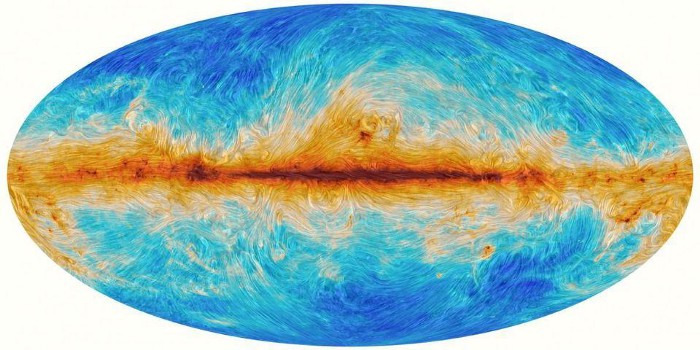Tau.Neutrino said:

Wow. I hope to see more like this.
> Just because magnetic fields are invisible doesn’t mean they’re undetectable, though. Astronomers have a very clever way of detecting magnetic fields in distant galaxies, starting with cosmic rays, which are subatomic particles travelling at significant fractions of the speed of light as they stream through space.
> When cosmic ray electrons are accelerated in the shock fronts of supernova remnants, they can be accelerated almost to light speed. These relativistic electrons then spiral along magnetic field lines, generating radio waves called synchrotron emission across a wide range of wavelengths. A synchrotron is an electron accelerator.
> It’s this synchrotron emission that can be detected here on Earth to reconstruct a magnetic field. It’s not just the strength of the emission that astronomers use, though, but also the polarisation, or the way the radio waves are twisted. This polarisation shows how the magnetic fields lines are oriented.
What’s the frequency of synchrotron emission? Checks web. “Most of the cosmic broad-band (“continuum”) radio emission is synchrotron”.
Edge on galaxies are the best. The magnetic fields of face-on spiral galaxies are just what you expect, spirals aligned with the arms. The Milky Way’s magnetic field was found from data from a different telescope, the Planck probe.
